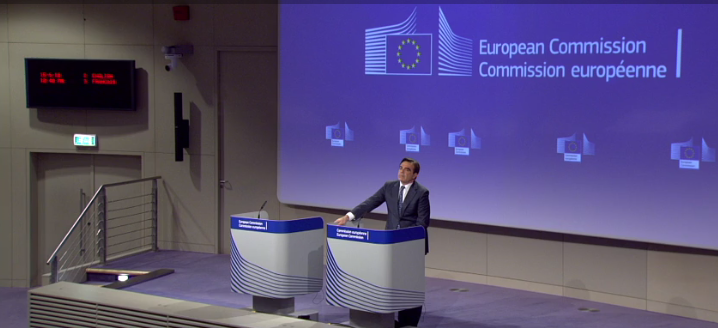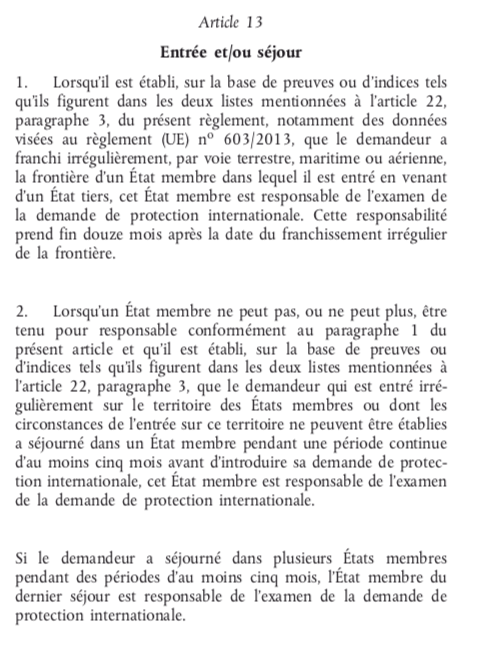Who is responsible for the asylum application. Article 13 and the Dublin Regulation
(B2) Contrary to what is often said, the Dublin Regulation does not establish a single rule, but a whole set of (fairly complex) rules which determine, quite logically, which State is responsible for processing the 'asylum. Here are the main elements
The basic principle: treatment by the first State whose border has been crossed illegally
“When it is established, on the basis of evidence or clues (evidence and clues listed in Article 22, § 3, of the regulations), that the applicant crossed irregularly, by land, sea or air, the border of a Member State which he entered from a third State, that Member State is responsible for examining the application for international protection. (Article 13.1)
The regulations provide for an often overlooked expiry principle.
« This responsibility ends twelve months after the date of the irregular border crossing. (article 13.1 2nd paragraph)
This principle remains the rule if no country is designated otherwise by the series of criteria involved.
“Where no responsible Member State can be designated on the basis of the criteria listed in this Regulation, the first Member State in which the application for international protection was lodged shall be responsible for examining it. (section 3.2)
Second principle: processing by the country in which the applicant has stayed for more than five months
When the twelve-month period has expired and the applicant has resided in another Member State for more than five months "continuously", it is this Member State which becomes responsible.
"Where a Member State cannot, or can no longer, be held responsible and it is established (on the basis of evidence or indications) that the applicant (who entered the territory of the Member States irregularly Member States or whose circumstances of entry into that territory cannot be established) has resided in a Member State for a continuous period of at least five months before lodging his application for international protection, that Member State is responsible for examination of the application for international protection. (Article 13.2)
Third principle: the last State of stay if several countries have a duration of five months
Finally, if the applicant has stayed in several States, each time for periods of five months, it is the Member State of the last stay which is responsible.
“If the applicant has resided in several Member States for periods of at least five months, the Member State of last stay is responsible for examining the application for international protection. (article 13.2 2nd paragraph)
Conclusion: as we can see, the texts are very complex, difficult. It is difficult to get a precise idea, especially since it is necessary to take into account the other applicable rules (in particular the European texts fixing relocation). If we can make a first interpretation (subject to discussion), the German Minister of the Interior (CSU) Seehofer can very well base himself on the Dublin regulation to send back to Greece and Italy certain asylum seekers, but not all. Other commitments must also be taken into account, applicants who have already received refugee status and may have the right to free movement in Europe; as well as
(Nicolas Gros-Verheyde)
NB: the rules induced by the Dublin regulation are so complex and so 'twisted' that the Advocate General of the Court, Yves Bot has just recommended in certain cases not to apply them. Read : The Dublin mechanism sometimes so absurd that it should not be applied (Advocate General)



